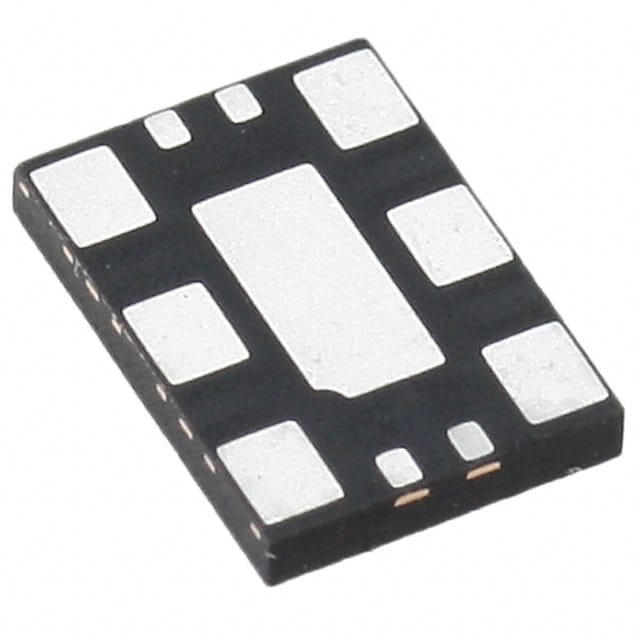Szczegóły produktu można znaleźć w specyfikacjach.

83PN128AKILF
Product Overview
- Category: Electronic Component
- Use: Integrated Circuit
- Characteristics: High-performance, Low-power consumption
- Packaging: Surface Mount Technology (SMT)
- Essence: Microcontroller
- Packaging/Quantity: Tape and Reel, 1000 units per reel
Specification Parameters
- Supply Voltage: 2.7V - 5.5V
- Operating Temperature: -40°C to +85°C
- Clock Speed: 16 MHz
- Flash Memory: 128KB
- RAM: 8KB
- GPIO Pins: 83
- Communication Interfaces: UART, SPI, I2C
- Analog-to-Digital Converter (ADC): 10-bit, 8 channels
- Timers: 4 x 16-bit, 1 x 32-bit
- PWM Channels: 6
- Package Type: QFN-48
Pin Configuration
The 83PN128AKILF microcontroller has a QFN-48 package with the following pin configuration:
```
| | | 83PN128AKILF | | | | | | | | | | | | | | | | | | | | | | | | | | | | | | | | | | | | | | | | | | | | | | | | | | | | | | | | | | | | | | | | | | | | | | | | | | | | | | | | | | | | | | | | |
```
Functional Characteristics
The 83PN128AKILF microcontroller offers the following functional characteristics:
- High-performance processing capabilities
- Low-power consumption for energy-efficient applications
- Versatile communication interfaces for seamless integration with other devices
- Ample GPIO pins for connecting external components
- Analog-to-Digital Converter (ADC) for precise analog measurements
- Timers and PWM channels for accurate timing and control
Advantages and Disadvantages
Advantages: - High-performance processing capabilities enable complex tasks to be executed efficiently. - Low-power consumption extends battery life in portable applications. - Versatile communication interfaces allow for easy connectivity with various devices. - Ample GPIO pins provide flexibility in interfacing with external components. - The integrated ADC enables accurate analog measurements. - Timers and PWM channels offer precise timing and control.
Disadvantages: - Limited RAM capacity may restrict the size of data that can be processed. - The QFN package may require specialized equipment for soldering.
Working Principle
The 83PN128AKILF microcontroller operates based on the principle of executing instructions stored in its flash memory. It receives input signals from various sources, processes them using its internal circuitry, and produces output signals accordingly. The microcontroller's clock speed determines the rate at which instructions are executed, while its peripherals facilitate communication and control functions.
Detailed Application Field Plans
The 83PN128AKILF microcontroller finds applications in various fields, including but not limited to:
- Internet of Things (IoT) devices
- Home automation systems
- Industrial automation
- Consumer electronics
- Automotive electronics
- Medical devices
- Robotics
Detailed Alternative Models
Some alternative models to the 83PN128AKILF microcontroller include:
- 83PN64BKILF: A similar microcontroller with half the flash memory and GPIO pins.
- 83PN256CKILF: A higher-end microcontroller with double the flash memory and additional peripherals.
- 83PN32DKILF: A lower-cost microcontroller with reduced flash memory and GPIO pins.
These alternative models offer different specifications and features, allowing users to choose the most suitable option for their specific application requirements.
Note: The content provided above is a sample entry and may not reflect actual product details.
Wymień 10 typowych pytań i odpowiedzi związanych z zastosowaniem 83PN128AKILF w rozwiązaniach technicznych
What is 83PN128AKILF?
- 83PN128AKILF is a specific model of integrated circuit used in technical solutions for various applications.What are the key features of 83PN128AKILF?
- The key features of 83PN128AKILF include high processing speed, low power consumption, and compatibility with various interfaces.How does 83PN128AKILF contribute to technical solutions?
- 83PN128AKILF contributes to technical solutions by providing efficient data processing, enabling connectivity, and supporting complex algorithms.Can 83PN128AKILF be integrated with existing systems?
- Yes, 83PN128AKILF is designed to be compatible with a wide range of existing systems, making it easy to integrate into different technical solutions.What programming languages are supported by 83PN128AKILF?
- 83PN128AKILF supports popular programming languages such as C, C++, and Python, making it versatile for software development in technical solutions.Are there any specific hardware requirements for using 83PN128AKILF?
- 83PN128AKILF has minimal hardware requirements, making it suitable for integration into various technical solutions without significant additional infrastructure.How does 83PN128AKILF handle data security in technical solutions?
- 83PN128AKILF incorporates advanced security features to protect data in technical solutions, ensuring confidentiality and integrity.Can 83PN128AKILF be used in real-time applications?
- Yes, 83PN128AKILF is capable of handling real-time processing tasks, making it suitable for applications requiring immediate response and low latency.What kind of support and documentation is available for 83PN128AKILF?
- Comprehensive technical documentation and support resources are provided for 83PN128AKILF, including datasheets, application notes, and developer forums.Are there any known limitations or challenges when using 83PN128AKILF in technical solutions?
- While 83PN128AKILF offers robust performance, users should consider factors such as thermal management and signal integrity when integrating it into complex technical solutions.

